Cartap hydrochloride
- CAS NO.:15263-52-2
- Empirical Formula: C7H16ClN3O2S2
- Molecular Weight: 273.79
- MDL number: MFCD01311812
- EINECS: 239-309-2
- SAFETY DATA SHEET (SDS)
- Update Date: 2025-10-23 17:25:30

What is Cartap hydrochloride ?
The Uses of Cartap hydrochloride
Cartap hydrochloride is used to control sucking and chewing insects (particularly Lepidoptera and Coleoptera), at almost all stages of development, on many crops including rice, potatoes, cabbage and other vegetables. It is also used on soya, peanuts, sunflower, maize, sugar beet, wheat, pearl barley, pome, stone and citrus fruit, vines, tea, chestnuts, ginger, cotton and sugar cane.
What are the applications of Application
Cartap hydrochloride is a thiocarbamate molecule that can form nereistoxin upon metabolization
Agricultural Uses
Insecticide: Cartap hydrochloride is used to control chewing and sucking insects on many crops, including rice, potatoes, cabbage and other vegetables, soy beans, peanuts, sunflowers, maize, sugar beet, wheat, pearl barley, pome fruit, stone fruit, citrus fruit, vines, chestnuts, ginger, tea, cotton, and sugar cane. Not currently registered in the U.S. or registered for use in EU countries. There are approximately 15 global suppliers.
Trade name
CADAN®; CALDAN®; KRITAP®; NTD 2®; PADAN®; PATAP®; SANVEX®; THIOBEL®; TI1258®; VEGETOX®
Safety Profile
Poison by ingestion andintravenous routes. An experimental teratogen. Aninsecticide. When heated to decomposition it emits verytoxic fumes of NOx, SOx, and HCl.
Metabolic pathway
Nereistoxin, 4-N,N-dimethylamino-1,2-dithiolane, is produced from cartap hydrochloride as a main product through photoreaction under UV irradiation in aqueous and methanolic solutions, and on glass and silica gel surfaces. Cartap hydrochloride is also oxidized with N-bromosuccinimide (NBS) to give nereistoxin.
Degradation
Cartap hydrochloride was hydrolysed to dihydronereistoxin (2) when
automatically titrated with sodium hydroxide solution and subsequently
oxidised to nereistoxin (3) (see Scheme 1). The hydrolysis was a base
catalysed pseudo-first-order reaction with a half-life of 10 minutes at pH 7
and 25 °C. Nereistoxin was so stable that no degradation was observed
after 24 hours at 100 °C and with pH in the range 1-4. The DT50 s of nereistoxin at 100 °C and at the higher pH values of 7/10 and 12.3 were 26,20
and 7.9 hours, respectively. It was predicted that nereistoxin (3) would
be hydrolysed by alkali to the 3-mercaptopropanesulfenic acid (4) which
would be oxidised to the sulfinic acid (5) and thence to the sulfonic acid
(6) (Asahi and Yoshida, 1977).
An aqueous solution of unlabelled cartap hydrochloride was exposed
to sunlight for a period of 5 days. Analysis was by IR, UV and MS
methods. Three products were isolated after irradiation and the major
of these was identified as a polymer of nereistoxin (7) and represented 80% of applied dose. The polymer (7) was not toxic to fish (Oryzias latips).
Cartap was hydrolysed to nereistoxin (3) via dihydronereistoxin (2).
Nereistoxin (3) was converted into the polymer (7) probably after photolytic
formation of a nereistoxin diradical as shown in Scheme 1 (Obayashi
and Asaka, 1983).
Properties of Cartap hydrochloride
| Density | 1.4008 (rough estimate) |
| vapor pressure | Negligible |
| refractive index | 1.6100 (estimate) |
| solubility | DMSO (Slightly), Methanol (Slightly), Water (Slightly) |
| pka | 7.61 (base) |
| form | neat |
| Water Solubility | ca. 200 g l-1 (20 °C, pH 5) |
| BRN | 5157539 |
| EPA Substance Registry System | Carbamothioic acid, S,S'-(2-(dimethylamino)-1,3-propanediyl) ester, monohydrochloride (15263-52-2) |
Safety information for Cartap hydrochloride
| Signal word | Danger |
| Pictogram(s) |
 Skull and Crossbones Acute Toxicity GHS06  Environment GHS09 |
| GHS Hazard Statements |
H301:Acute toxicity,oral H312:Acute toxicity,dermal H410:Hazardous to the aquatic environment, long-term hazard |
| Precautionary Statement Codes |
P264:Wash hands thoroughly after handling. P264:Wash skin thouroughly after handling. P270:Do not eat, drink or smoke when using this product. P273:Avoid release to the environment. P280:Wear protective gloves/protective clothing/eye protection/face protection. P301+P310:IF SWALLOWED: Immediately call a POISON CENTER or doctor/physician. |
Computed Descriptors for Cartap hydrochloride
Cartap hydrochloride manufacturer
Volkschem Crop Science Private Limited
New Products
Indole Methyl Resin tert-butyl 9-methoxy-3-azaspiro[5.5]undecane-3-carboxylate Boc-His(Boc)-OH 2-CTC Resin 4-Chloro-7-tosy1-7Hpyrrolo[2,3-d]pyrimidine 5,7-Dibromo-1H-indole 2,5-dichloro-N-hydroxy-4,6-dimethylpyridine-3-carboximidamide 2,2-Dimethoxy-7-azaspiro[3.5]nonane hydrochloride 4-chloromethyl-5-methyl-1,3-dioxol-2-one (DMDO-Cl) R-2-BENZYLOXY PROPIONIC ACID 1,1’-CARBONYLDIIMIDAZOLE 1,1’-CARBONYLDI (1,2-4 TRIAZOLE) N-METHYL INDAZOLE-3-CARBOXYLIC ACID 4-((2-hydroxyethyl)thio)benzoic acid 1-(TERT-BUTOXYCARBONYL)-2-PYRROLIDINONE Methyl 6-methylnicotinate 3-Pyridineacrylic acid tert-Butyl carbazate TETRAHYDRO-2H-PYRAN-3-OL 2-((4-morpholinophenylamino) (methylthio) methylene) malononitrile 3-(4-morpholinophenylamino)-5-amino-1H-pyrazole-4-carbonitrile 2,4-dihydroxybenzaldehyde 1,3-Diethyl-1,3-Diphenylurea Methyl 2-methylquinoline-6-carboxylateRelated products of tetrahydrofuran
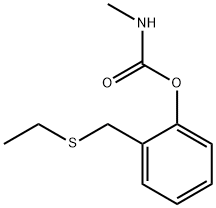
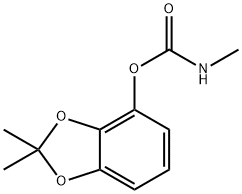
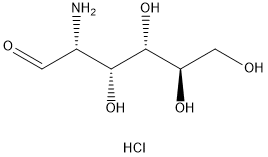

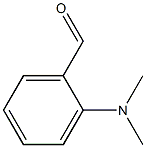
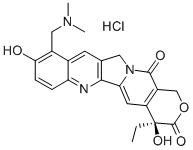
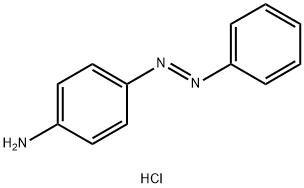
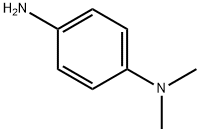
You may like
-
 Cartap hydrochloride 98%View Details
Cartap hydrochloride 98%View Details
15263-52-2 -
 Cartap hydrochloride 15263-52-2 98%View Details
Cartap hydrochloride 15263-52-2 98%View Details
15263-52-2 -
 Cartap hydrochloride CAS 15263-52-2View Details
Cartap hydrochloride CAS 15263-52-2View Details
15263-52-2 -
 Cartap Hydrochloride 4% GR, 25View Details
Cartap Hydrochloride 4% GR, 25View Details
15263-52-2 -
 Cartap Hydrochloride 4% GR Insecticide, Bag, 5 KgView Details
Cartap Hydrochloride 4% GR Insecticide, Bag, 5 KgView Details
15263-52-2 -
 Cartap Hydrochloride 4% Gr, Pouch, 1 Kg 5 KgView Details
Cartap Hydrochloride 4% Gr, Pouch, 1 Kg 5 KgView Details
15263-52-2 -
 Cartap Hydrochloride 4 Gr4, Packet, 1kgView Details
Cartap Hydrochloride 4 Gr4, Packet, 1kgView Details
15263-52-2 -
 Granules Captap 4G Cartap Hydrochloride 4% GR Insecticide, 1 KgView Details
Granules Captap 4G Cartap Hydrochloride 4% GR Insecticide, 1 KgView Details
15263-52-2
